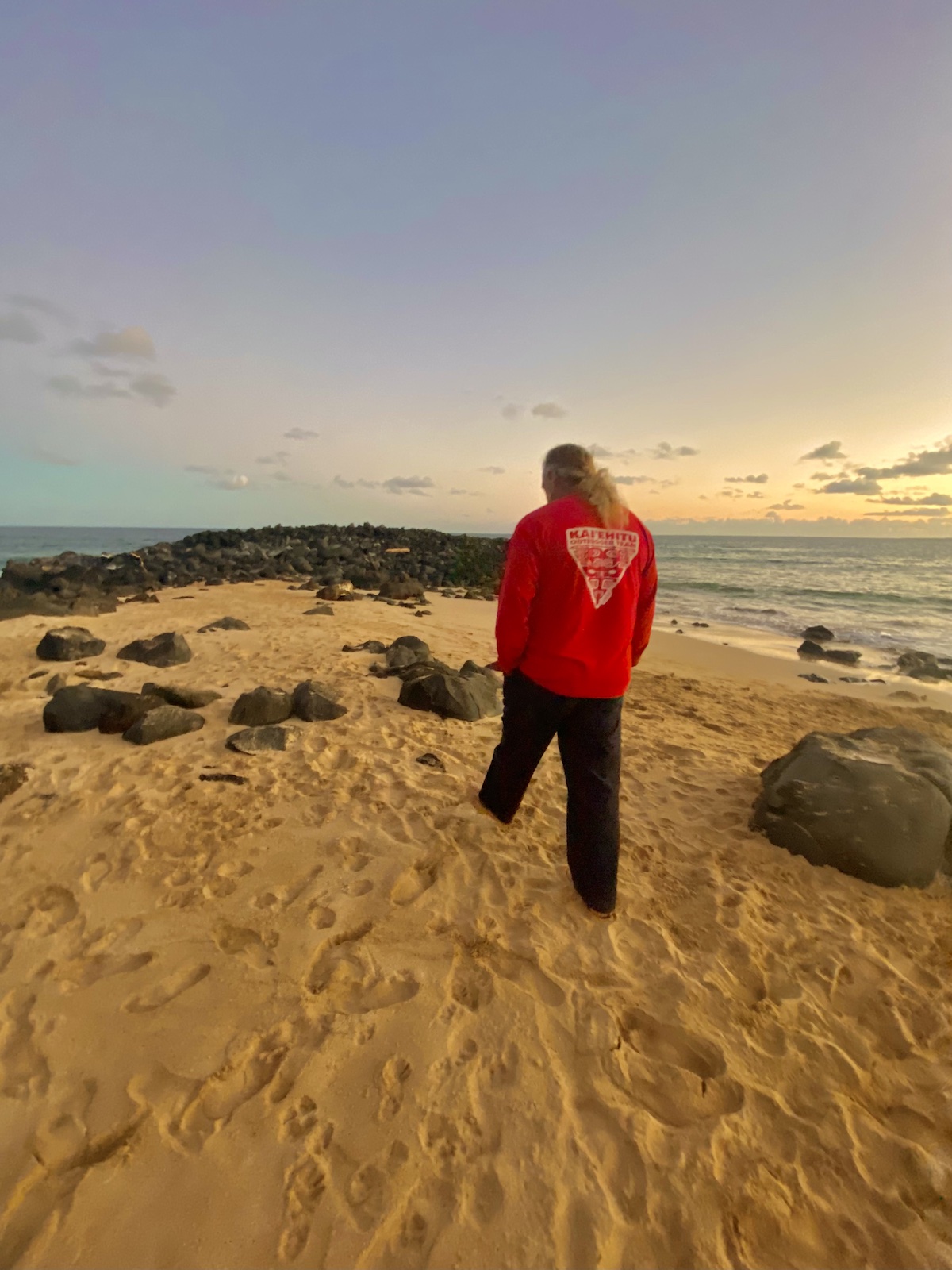The full moon earlier this week is known as the Wolf Moon, and also Ice Moon, Cold Moon, Old Moon, Great Spirit Moon, and Moon after Yule. Living on Kaua’i, it was just a beautiful moon against the pinks of a setting sun.
Mahina and Hina
Hina is the Moon Goddess. Famous for her skills as a fine tapestry clothmaker, she was widely sought after. She makes her cloth from the banyan tree’s bark. While not native to the Hawai’ian islands, the banyan tree holds significant meaning. The oldest living banyan tree lives in Lahaina, Maui. In Hawai’ian mythology, their branches connect the divine and earthly realms and upon them, ancestral spirits travel.
Working tirelessly, with no one to help her, Hina found herself exhausted. In her attempt to flee from these demands, she first climbed a rainbow to the sun. She found it too hot and so the following night, she continued on, to the moon. Here, she made her home, under a banyan tree, the dark spots on the moon, according to some versions of this Hawai’ian legend. The word for “moon” in Hawai’ian is Mahina.
The Moon Goddess is also the mother of Maui and Moloka’i.
Many cultures follow the moon and her phases, which indicate the time to plant and harvest, for example. We have long associated the moon with the feminine, the waxing and waning of our cycle. The Hawai’ian Lunar Calendar, or Kaulana Mahina, is based on 360 days, with each month (Malama) having 30 days and 30 phases. The waxing moon is Ho’onui, the full phase is Piha Poepoe, and the waning is Hō’emi. Every four years, February (Kaulua) gets one additional day. To align the calendar to the moon phases, there is also a 13th moon (Malama Pili).
The calendar has two seasons – the wet and dry seasons. The months of November to April are the wet season or the winter (Ho’oilo). The other six months make up the dry season or summer (Kau Wela). [read more – ‘Ano Lani: ‘Ano Honua: A Spiritual Guide to the Hawaiian Lunar Calendar by Kahu Wendell Kalanikapuaenui Silva]




We drove down to Kealia, near Kapa’a as we often do. It was a beautiful night, with the pink afterglow of a sun that set just a few minutes before. Seeing the moon rise as we stepped onto the beach was most unexpected. I only had my phone; still, it was able to capture the beautiful colours and the moon, which was very, very large and so, so close.
Kealia is a few minutes north of Kapa’a, the island’s largest town. It’s an easy pull off of Kuhio Highway going north.
We call it our “home beach” since it’s closest to where we live and where we spend the most time. It’s a beautiful beach, a long stretch of soft sand.
I often walk toward the south end, where there are incredible wave forms to photograph. This part of the beach has stronger currents and undertows than the north end, where it’s easier for me. Near the rocks, it is also where the younger kids play and go boogie boarding.
The lifeguards at Kealia seem to be always busy calling out people who are clearly not skilled, experienced or strong enough to be going further than knee deep. Every so often, a lifeguard ride out on their quad to warn people. The ocean changes quickly and it’s easy to get caught out.
Kealia is beautiful place and I’ve experimented with my photography here. Oftentimes I bring my Canon M50 since it’s small and light. However it is nowhere as good in low light as my trusty Canon 5D. This beach is a great place to capture images of surfers in the late afternoon and sunset hours.


